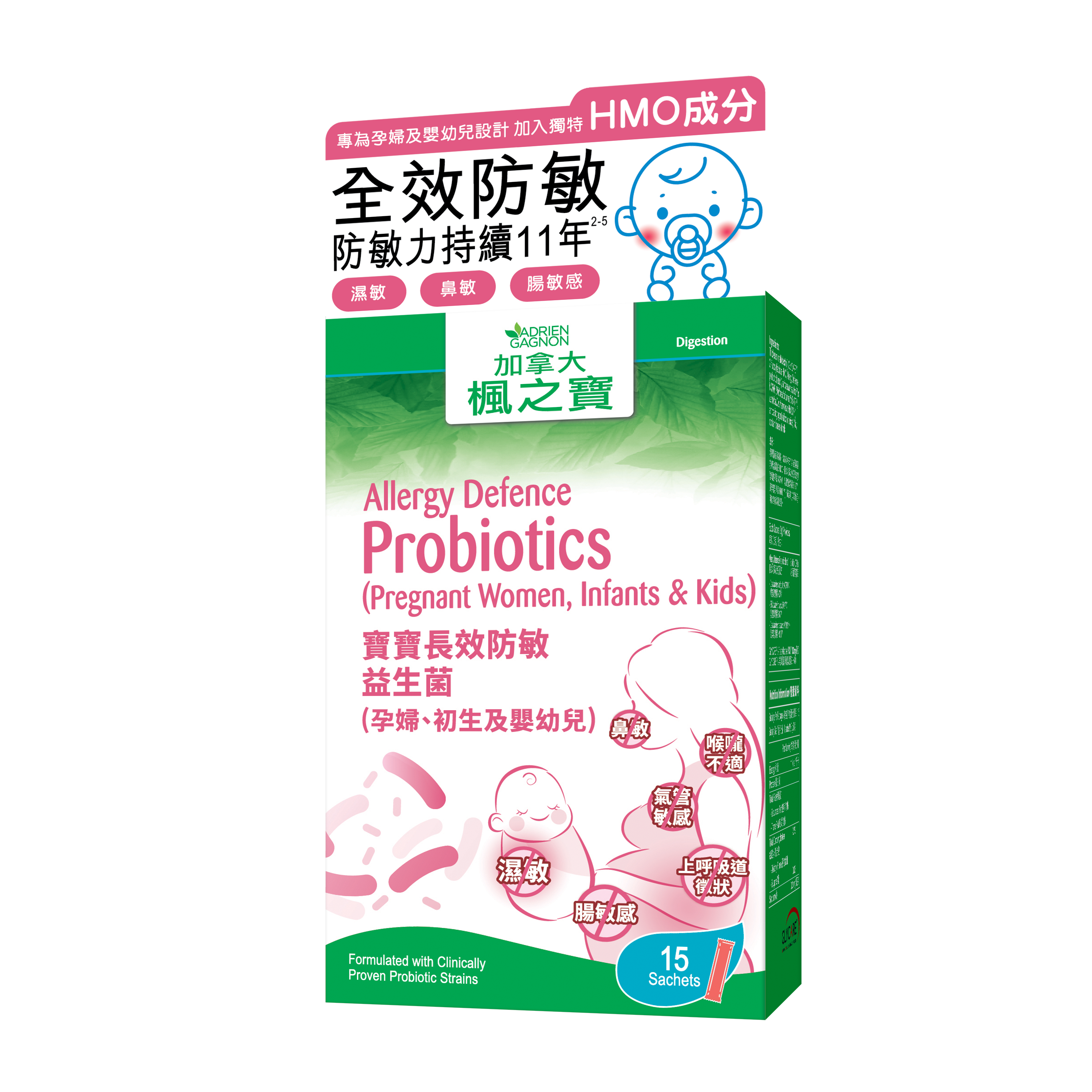New Product👶🏻Allergy Defence Probiotics

The development of gut microbiome in infants and young children is closely related to their immune and allergy resistance. The period from 35 weeks of pregnancy to the age of 2 is the golden developmental phase for allergy resistance. Research shows that taking scientifically proven probiotic strains during this golden developmental period helps establish an allergy barrier, preventing issues such as skin sensitivity, allergic rhinitis, bronchial sensitivity, and intestinal sensitivity.
New Product👶🏻Allergy Defence Probiotics (15 Sachets)

【Long-Lasting Allergy Defence Formula with Scientifically Proven Strains】
● Long-Lasting Allergy Allergy Defence Formula (includes Lactobacillus rhamnosus HN001™, Lactobacillus acidophilus NCFM®, and Bifidobacterium lactis Bl-07®)
● Clinically proven to be taken from the 35th week of pregnancy until the baby is 2 years old, significant reduction in cumulative allergy prevalence and the effect continues over 11 years²⁻⁵.
● Prevents nearly half² of all children from developing skin allergy and reduces allergy symptoms.
● Boosts immunity; clinically proven to nearly double the recovery speed from illnesses in children¹.
● Reduces cold and upper respiratory symptoms; clinically proven to decrease runny nose by 59%¹ and coughing by 62%¹.
● Clinically proven to reduce the chances of fever by 73%¹ and decrease antibiotic use by 84%¹.
● Helps establish an allergy barrier, lowering infection risk and effectively suppressing harmful bacteria.
● High-efficiency bacteria locking technology, capable of resisting the strong acid environment of the stomach, ensuring that probiotics enter the intestines, maintaining the optimal balance of intestinal health¹.
● GLYCARE® 2FL 9000 HMO can promote the growth of probiotics and contribute to intestinal survival and stability, further promoting intestinal health.
● Utilized plant-based capsules
¹ CU Medicine (2017) Press release.
² When combined with traditional therapies, this approach achieves an eradication rate of up to 87%. Parth, K.et al. (2021). Journal of Pharmaceutical Research International, 33(52B), 151–159.
³ J Soman, et al. (2022). International Journal of Health Sciences and Research, 12(3), 253–264.
⁴ Buckley M, Lacey S, Doolan A, Goodbody E, Seamans K.(2018). BMC Nutr, 4:48.
⁵ Colom J, et al. (2023) Benef Microbes, 14(1):31-44This product is not registered under the Pharmacy and Poisons Ordinance or the Chinese Medicine Ordinance. Any claim made for it has not been subject to evaluation for such registration. This product is not intended to diagnose, treat or prevent
